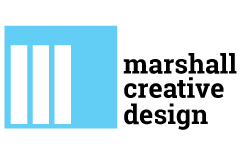This article was found on http://www.smashingmagazine.com/2011/06/22/following-a-web-design-process/
Almost every Web designer can attest that much of their work is repetitive. We find ourselves completing the same tasks, even if slightly modified, over and over for every Web project. Following a detailed website design and development process can speed up your work and help your client understand your role in the project. This article tries to show how developing a process for Web design can organize a developer’s thoughts, speed up a project’s timeline and prepare a freelance business for growth.
First of all, what exactly is a ‘process’? A Web development process is a documented outline of the steps needed to be taken from start to finish in order to complete a typical Web design project. It divides and categorizes the work and then breaks these high-level sections into tasks and resources that can be used as a road map for each project.
A Typical Process
Here is a standard process that was put together using examples from around the Web as well as my own experience. (Note: Please see the resource links at the end of each phase.)
1. Planning
The planning stage is arguably the most important, because what’s decided and mapped here sets the stage for the entire project. This is also the stage that requires client interaction and the accompanying attention to detail.
- Requirements analysis
This includes client goals, target audience, detailed feature requests and as much relevant information as you can possibly gather. Even if the client has carefully planned his or her website, don’t be afraid to offer useful suggestions from your experience. - Project charter
The project charter (or equivalent document) sums up the information that has been gathered and agreed upon in the previous point. These documents are typically concise and not overly technical, and they serve as a reference throughout the project. - Site map
A site map guides end users who are lost in the structure or need to find a piece of information quickly. Rather than simply listing pages, including links and a hierarchy of page organization is good practice. - Contracts that define roles, copyright and financial points
This is a crucial element of the documentation and should include payment terms, project closure clauses, termination clauses, copyright ownership and timelines. Be careful to cover yourself with this document, but be concise and efficient. - Gain access to servers and build folder structure
Typical information to obtain and validate includes FTP host, username and password; control panel log-in information; database configuration; and any languages or frameworks currently installed. - Determine required software and resources (stock photography, fonts, etc.)
Beyond determining any third-party media needs, identify where you may need to hire sub-contractors and any additional software you may personally require. Add all of these to the project’s budget, charging the client where necessary.
Resource links for this phase:
- Jumpchart: Client/developer collaboration tool
- Dropbox: File-sharing and collaboration tool
- Mindmeister: Free online mind-mapping software
- Writing Bulletproof Web Design Contracts
2. Design
The design stage typically involves moving the information outlined in the planning stage further into reality. The main deliverables are a documented site structure and, more importantly, a visual representation. Upon completion of the design phase, the website should more or less have taken shape, but for the absence of the content and special features.
- Wireframe and design elements planning
This is where the visual layout of the website begins to take shape. Using information gathered from the client in the planning phase, begin designing the layout using a wireframe. Pencil and paper are surprisingly helpful during this phase, although many tools are online to aid as well. - Mock-ups based on requirements analysis
Designing mock-ups in Photoshop allows for relatively easy modification, it keeps the design elements organized in layers, and it primes you for slicing and coding when the time later on. - Review and approval cycle
A cycle of reviewing, tweaking and approving the mock-ups often takes place until (ideally) both client and contractor are satisfied with the design. This is the easiest time to make changes, not after the design has been coded. - Slice and code valid XHTML/CSS
It’s coding time. Slice the final Photoshop mock-up, and write the HTML and CSS code for the basic design. Interactive elements and jQuery come later: for now, just get the visuals together on screen, and be sure to validate all of the code before moving on.



